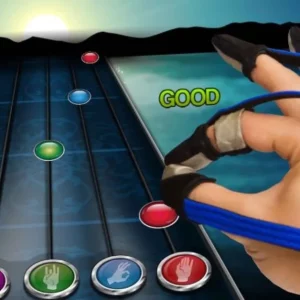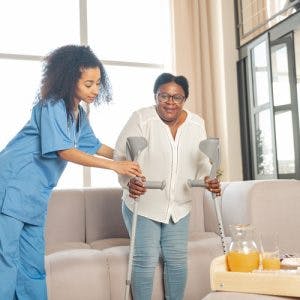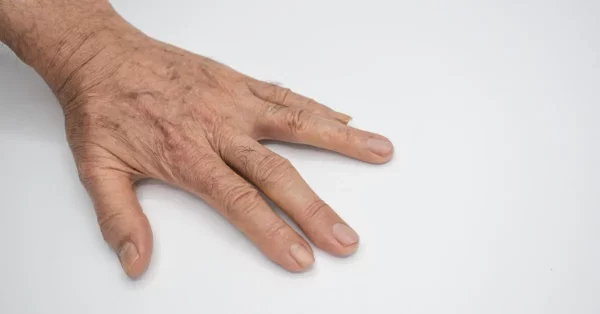Survivors may understand that stroke recovery is a lengthy process, but it can be hard to anticipate what this may look like 5 years down the road. Every stroke is different and, as a result, everyone will recover at different rates. For this reason, it can be difficult to maintain hope when you experience setbacks along your journey.
Thankfully, we know that recovery of function is possible, even 5 years after the initial stroke. Even though the stroke recovery timeline can be ambiguous, there are some patterns worth noting. In this article, we will paint a rough picture of what your stroke recovery process may look like. Additionally, we will discuss the different steps you can take to maximize your recovery and reach your goals.
What to Expect During Stroke Recovery
A stroke is a complex neurological injury that can be accompanied by a wide variety of secondary effects. These effects can be sensory, motor, cognitive, or emotional, and depend largely on the area of the brain affected. In short, the type of stroke you experience will determine what functions are impacted. Some survivors experience hemiplegia or hemiparesis while others may be impacted by behavior changes or difficulty swallowing after stroke.
Regardless of your specific symptoms, most survivors will participate in regular therapy to recover following a stroke. Consistent physical therapy, speech therapy, and occupational therapy help patients get as close to a full recovery as possible. If survivors are diligent with therapy exercises, recovery often happens more quickly. That’s because massed practice or high repetition of the exercises provided in therapy is stimulating neuroplasticity: your brain’s ability to rewire itself.
Neuroplasticity is the foundation of recovery after stroke, even after the 5-year mark. This natural process allows your brain to rewire important neural pathways to other healthy areas of the brain. Over time, you can restore skills that you had previously lost due to tissue damage caused by the stroke. However, this takes tremendous commitment from the survivor.
In most cases, survivors will see the greatest rate of recovery during the first 3-6 months after stroke. This rapid return of function takes place when neuroplasticity is most active and is referred to as spontaneous recovery. While this may be the period where survivors see the fastest improvement, research tells us that recovery is still possible years later in the stroke recovery timeline.
5 Year Recovery Outlook
Survivors who participate in daily therapy or consistent therapy throughout the week often achieve major milestones by the 5-year mark. Survivors of a mild or moderate stroke can sometimes achieve a full or near-full recovery by this point. Those who experienced a severe or massive stroke can still make progress at this point of recovery as well.
It’s no secret that survivors will experience the most functional improvements in the first year after stroke. What we want you to understand, however, is that improvement is still possible well into the chronic stage of stroke recovery.
By the 5-year mark, gross motor skills may have returned, meaning that basic arm and leg functions have improved. However, survivors may still have a long way to go concerning fine motor skills and coordination. Even after 5 years, survivors can continue working to fine-tune their movements.
To give you an example, this observational study looked at improvement in arm function for stroke survivors in the first 2 years of recovery. While the greatest improvements were recorded in the first month due to heightened neuroplasticity, there continued to be improvements noted at the 2-year mark. This demonstrates the long-term potential for functional recovery that stroke survivors can achieve.
Another case study examined a survivor who experienced the return of arm function 23 years after his initial stroke. Through intensive physical therapy and repetitive exercise, he continued to gain function for years after this initial return.
While improvements after the first year following your stroke might seem slow, these research studies demonstrate how stroke recovery is always possible, even after the 5-year mark.
Why Some Survivors “Fail to Launch” 5 Years After Stroke
Overall, the outlook on recovery 5 years after stroke is optimistic for survivors who participate in a daily home exercise program. Whether this is in a clinic or on your own at home, you can continue to see gradual improvements in your performance of daily tasks as well as increased independence. While experiencing a plateau in recovery or an occasional regression is to be expected, you can move past these setbacks by staying consistent with your rehabilitation program.
Unfortunately, survivors can also see signs of decline after stroke when therapy is neglected. When stroke survivors fail to exercise or participate in therapy, they will not reach their recovery potential and their deficits will likely worsen. The concept of learned non-use illustrates this. Neglect of the affected limbs can eventually lead to total loss of control of those limbs.
This was demonstrated in one study that focused on stroke patients 5 years post-stroke. Researchers found that “the level of functional and motor performance at 5 years post-stroke was equivalent to the level measured at 2 months.” Researchers credit some of the initial gains during the first 2 months of recovery to the intensity of inpatient rehabilitation. When you are not continuing this intense rehab after discharge to home, you will likely plateau or even lose what function you had previously reclaimed.
How to Keep Recovery Going After 5 Years
At Flint Rehab, we agree that rehabilitation needs a boost after discharge from inpatient rehabilitation. Although patients often go to outpatient therapy afterward, this is not a long-term solution for most. While many outpatient clinics are outstanding, insurance often fails to cover more than one or two sessions a week. In some cases, you may not have coverage for outpatient rehab at all. Considering the high cost of rehabilitation services, this leaves many survivors without adequate access to therapy.
Therefore, if patients want to continue to improve after discharge from inpatient and outpatient therapy, they need a strong home therapy regimen. This is why working together with your therapy team to create meaningful post-stroke goals and review effective exercise guidelines is so important. They will be able to tailor your therapy exercises to your unique needs and abilities.
Stroke recovery requires consistency and high repetition. However, even the greatest rehab programs can become monotonous or difficult to stay consistent with. Fortunately, high-tech rehabilitation devices like Flint Rehab’s FitMi home therapy provide motivation and encourage consistency. Even survivors recovering 5 years after stroke can see great improvement with FitMi because it encourages high repetition of therapeutic exercises. In fact, one patient said this in a FitMi review: “Got so many reps in, think it was more in a month than the last 5 years. Great product.”
Finding a way to stay motivated to continue pursuing rehabilitation is incredibly important, especially in the chronic stage of recovery. Seek support from those around you and spend time researching different resources you can use to promote gains in function. This can also include participating in an exercise class, taking up a new hobby, or joining a stroke support group in your community.
Margaret’s Story: Recovery Over 5 Years After Stroke
For many, it can be helpful to hear from other stroke survivors who are past the 5-year mark. This can help you stay motivated on your recovery journey. Before we wrap up this article, let’s hear a story from a stroke survivor named Margaret who has had more than 5 years elapse since her stroke. This was part of her review for FitMi home therapy, which she used for rehab at home.
“In 2010, I had a stroke. Since then, my right arm and both of my hands have become increasingly more contracted. I have not been able to open and close my hands. My hands have been clenched and very tight. My arm has been contracted up toward my chest. In June 2017, I received the FitMi. My caregivers have helped me use the FitMi with my hands. Although I have been unable to use the FitMi every day, I have regularly used it either 2 or 3 days a week.
After years of having clenched hands, my hands are starting to relax. I am able to open and close my hands much more easily. My arm is relaxing and is not as contracted. I am regaining flexibility of my fingers and now I am able hold the FitMi pucks instead of the caregivers having to hold my hand over the FitMi and moving my hand.
I feel I have made progress in regaining the use of my hands and right arm. My caregivers and Occupational Therapist agree. I am encouraged and will continue to use the FitMi, and I feel confident I will continue to make progress in regaining my flexibility and use of my hands and right arm. I am very grateful.”
Anticipating the Journey Ahead
As you can see, regular therapy is important during stroke recovery, even after 5 years. Regardless of what secondary effects you experience, your daily function and independence can improve with time and dedication. To maximize this, continue working closely with your therapy team and stay committed to your personalized home exercise program. Since it can be difficult to stay motivated, find ways to incorporate your favorite activities or home rehab equipment to make your program more enjoyable.
It may be true that the greatest rate of improvement is generally in the first months of stroke recovery. However, current research proves that gains can be made even years into your rehab journey. There is no cutoff for improvement and as long as you put in the work, you can see results. While progress will slow and it may take longer to see changes, keep taking steps toward recovery and never give up hope.










